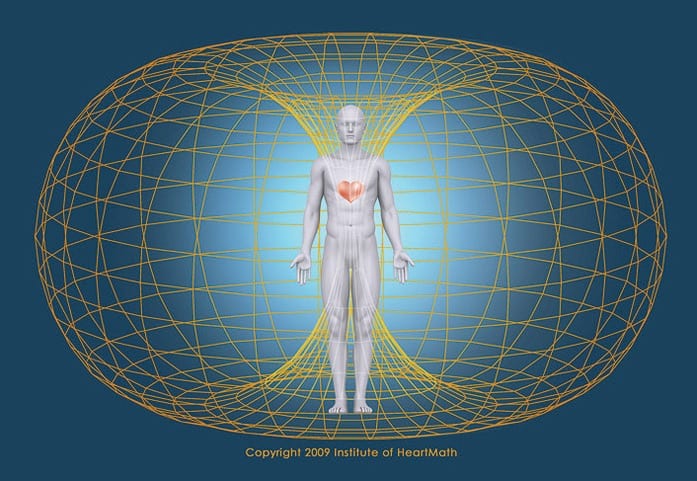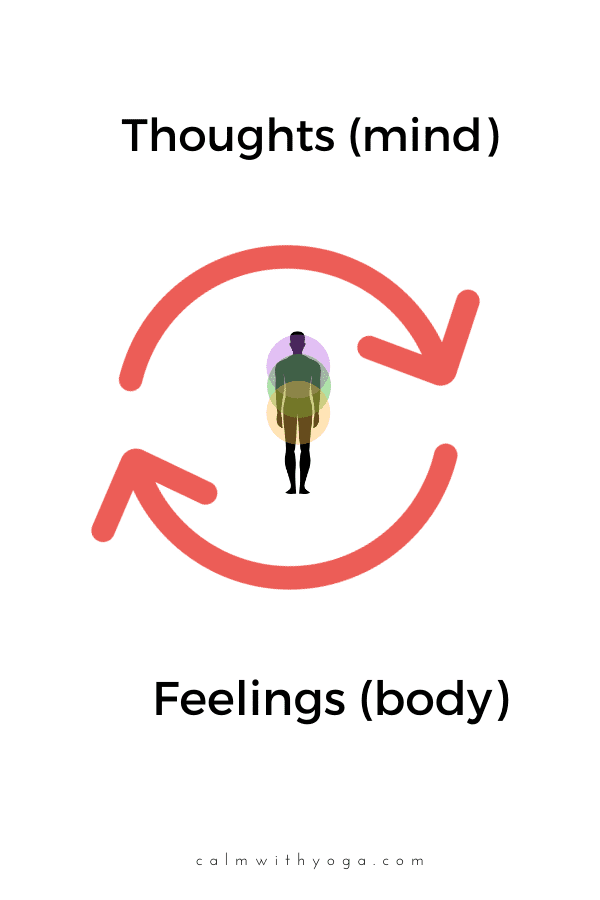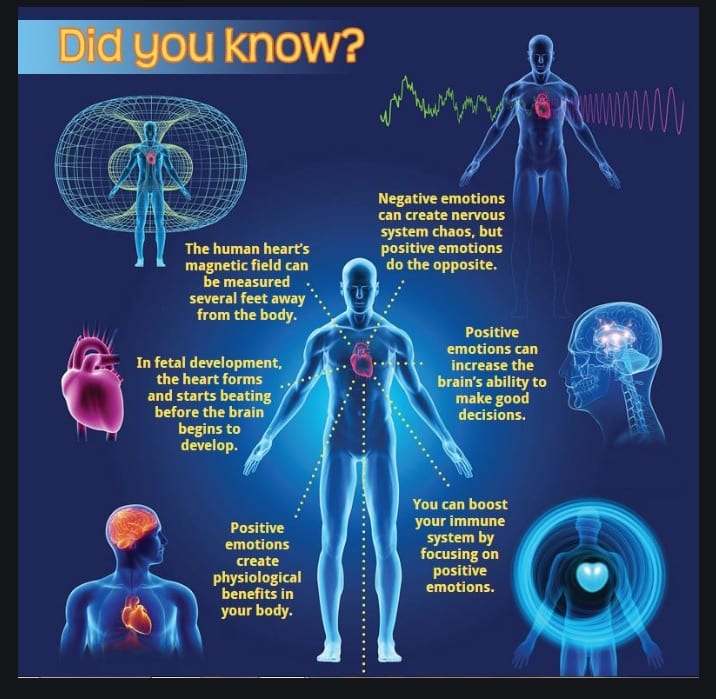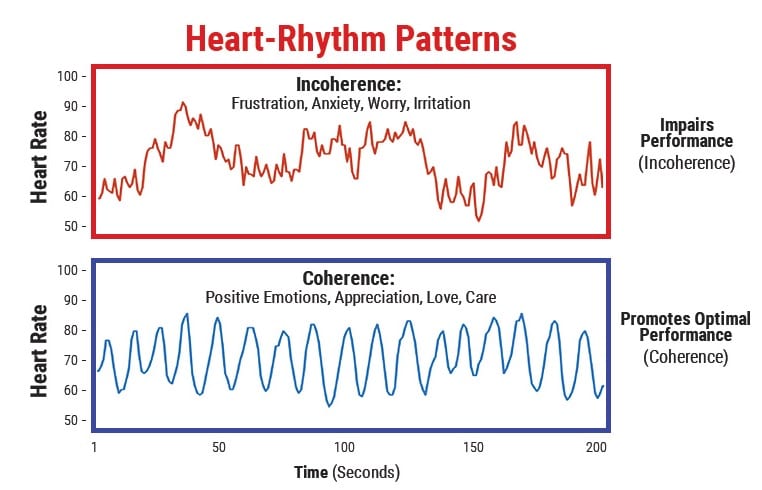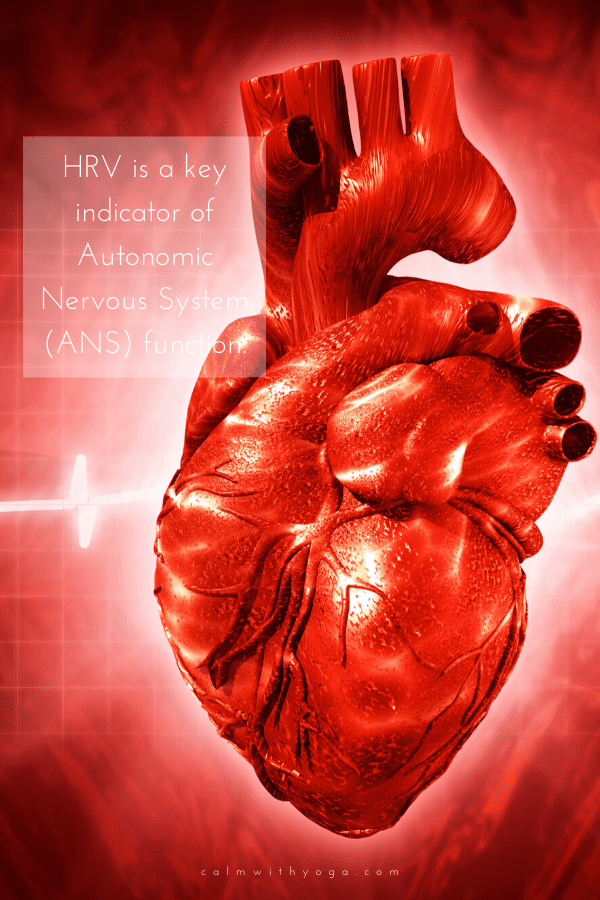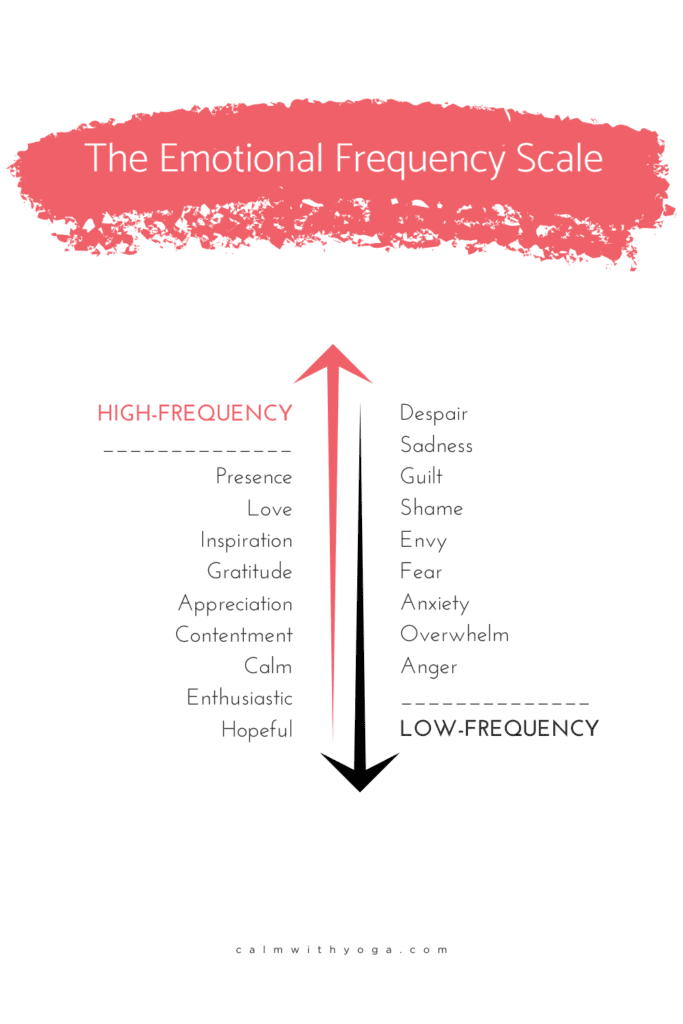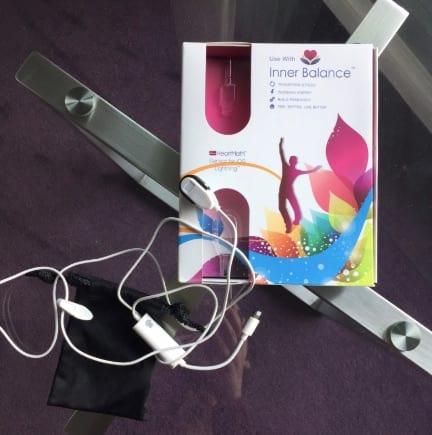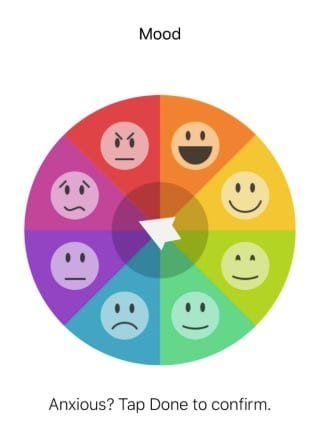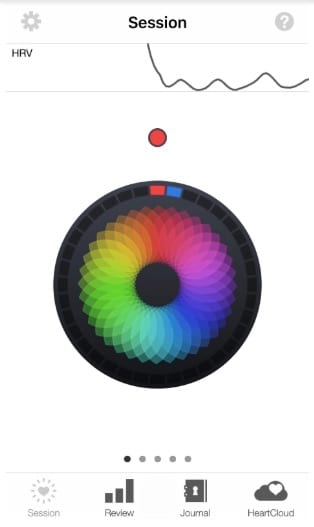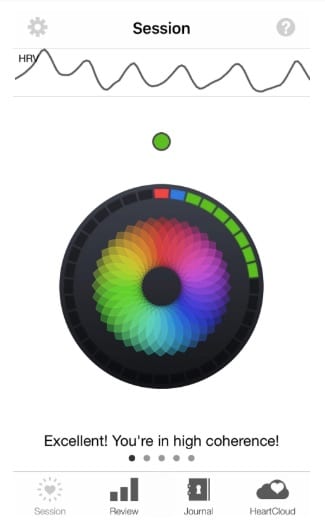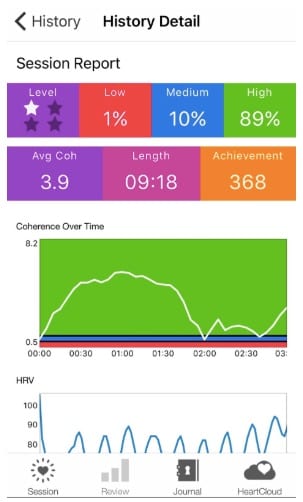An optimistic perspective, a feeling of appreciation, or a gesture of kindness, for example, are energy assets. Negative thoughts and feelings deplete our store of energy. Anger, jealousy, and judgmental thoughts, for example, are energy deficits. – Doc Childre, founder of the Institute of Heartmath & author of “The Heartmath Solution” The electromagnetic field your heart generates is 5,000 times stronger than the field generated by your brain. Your heart has the ability to create entrainment (synchronization) with your body’s systems such as your nervous system, your immune system, and your digestive system. This is what we call heart coherence (aka: cardiac coherence, psychophysiological coherence) *Psychophysiology: the study of how our mental state and bodily responses impact one another. Let’s define coherence as: This means that our body, thoughts, and feelings are in sync and flowing together in a way that promotes health, well-being, and healing. It can be measured by our heart-rhythm patterns: The more balanced and smooth they are, the more in sync, or coherent we are. Stress levels recede, energy levels increase and our brain and the “heart brain” work together. It is a state of optimal clarity, perception, and performance. – The Heartmath Institute, leaders in research on heart intelligence, coherence, intuition, and the science of interconnectivity. Entering a state of coherence is like switching the gears inside your mind, heart, and gut. This awakens your body’s own innate intelligence. When a coherent heart syncs with your brain you literally get smarter. Your mind feels clear, intuition gets louder, problem-solving skills amplify because brain function improves as do cognitive functions.
Coherence is good for health care and stress management. A coherent state also has the power to accelerate healing, increase stress reduction, boost and strengthen immunity, and re-balance chaotic hormones.
What activates heart coherence?
Positive emotions and positive feelings such as gratitude, appreciation, contentment, and inspiration activate heart coherence. When we speak of heart-rhythm coherence or physiological coherence, we are referring to a specific assessment of the heart’s rhythms that appears as smooth, ordered and sine-wavelike patterns. From a physics perspective, when we are in a coherent state, virtually no energy is wasted because our systems are performing optimally and there is synchronization between heart rhythms, the respiratory system, blood-pressure rhythms, etc. Among the many benefits of personal coherence are increased composure, more energy, clear thinking, enhanced immune system function, and hormonal balance. – Heartmath Institute, Science of the Heart – Rollin McCraty, Heartmath Institute By the same token, negative emotions create a state of incoherence. The image above was taken as part of a study conducted by the Institute of Heartmath, who wanted to track how different emotions affect the body, specifically how they affect the heart. The heart rhythm reading on top in red was recorded during a moment of frustration. Notice the jagged pattern that represents energy being drained while brain function and performance decline. The bottom blue reading was recorded during a moment of appreciation. Notice the more harmonious, sine-wave-like pattern that represents improved brain function and heart coherence. This is visual evidence of the power of positive emotional states. They can impact our ability to think, process, create, reason, and remember. They even strengthen our physical bodies by building up our bodily systems and organs while even strengthening our immunity as Heartmath research has shown. Making a daily habit out of intentionally creating positive emotional experiences can help your heart become coherent. Make time during your day for a quick gratitude pause and notice how you feel. Gratitude is a powerful emotion that feels pleasant and expansive and can also even re-wire your brain for the better. Another way to activate coherence is by intentionally shifting your breathing patterns. Slow, deep, rhythmic breathing helps create a coherent heart rhythm. Belly breathing helps to activate your body’s relaxation & healing response. Try the Balancing Breath Technique for as little as one minute to create a shift.
(Bring your attention to your heart area as you breathe for an added bonus.)
How do we know when we’ve activated heart coherence?
It turns out that our heart’s rhythm is an excellent indicator of coherence and autonomic nervous system (ANS) function. – Dr. John Demartini, Researcher, Teacher, & Author Why? Because our heart’s rhythm reflects our emotional and mental state. Your mental and emotional states are reflected in your body. The thoughts you think (both consciously and unconsciously) create your emotions. Both mind and emotions directly influence your heart’s rhythm and your Autonomic Nervous System (ANS) activity. Your ANS is intricately tied to your emotional state. There are certain bodily metrics you can use to gauge how balanced your ANS function is:
Heart rate variability (HRV) Blood pressure Breath rate
Of all of these, HRV is the most reliable when it comes to determining heart-brain coherence. Because HRV reflects heart-brain interactions, many of Heartmath’s studies have used this metric to measure how emotions impact your nervous system:
The higher your HRV the more coherence you’ll experience.
A higher HRV is also an indicator of good health, nervous system balance, stress resilience, behavioral flexibility, and a high capacity for self-regulation. That’s why HRV is becoming an increasingly popular parameter in the fields of sports and sports science, corporate health, cardiology, ergonomics, diabetes care and relaxation training therapy. HRV is also being widely used on physiological research of the autonomic nervous system. – Institute of Heartmath What exactly is HRV?
HRV is the space between heartbeats or ‘beat-to-beat’ changes in heart rate. Heart rate and HRV have an inverse relationship. The faster the heart rate the less space in between heartbeats. If your heart rate increases, HRV decreases. If HRV increases, your heart rate goes down. Heartmath tracked HRV and different emotional states and found that: Heartmath’s findings make the benefits of engaging in these states real, measurable and tangible. This reflects increased order in higher-level control systems in the brain, increased synchronization between the two branches of the ANS, and a general shift in autonomic balance towards increased parasympathetic activity.
Positive Emotions (gratitude, empathy, tenderness, appreciation, inspiration, etc.) build us up and lead to growth. And not just figuratively or emotionally, or mentally. They build up our bodily systems and our organs. They restore order into our cells. They strengthen immunity. Negative Emotions (anger, frustration, anxiety, resentment, annoyance, irritability, disappointment) tear away at us little by little. They wear us out physically, emotionally and mentally. They initiate a cascade of stress hormones that weaken our bodies by impairing functions like digestion, immunity, creative thinking, and metabolism.
So how exactly do we increase and measure HRV?
Unless you have some sort of biofeedback equipment you really won’t know for certain if you’ve entered coherence. Though not necessary, there is a tool that I recommend that can help you as you work towards increasing your heart coherence and HRV. It’s an app that really helped me when I first began this practice so I know from personal experience that it can be effective when used in the right way and at the right times. It’s called the Inner Balance app created by the Heartmath Institute:
The app comes with a sensor that gets clipped to your ear to detect your pulse. You are then prompted to choose the mood that best describes your current state out of 8 set emotions. (I find myself using the app mostly when I am either anxious or angry.)
You can then begin your session, in which the app will prompt you to breathe and follow a specific pace while it literally tracks your HRV for you second by second. You’re even able to see it change on your screen as you breathe and as you build coherence. The red light signifies you’re in an incoherent state (low HRV):
The green light signifies high coherence, and you’ll even receive a notification letting you know exactly when and how long you’re in high coherence so you can track your rate increasing:
Once your session is over, you’re able to see a detailed report with stats, graphs, and the like for all of you math nerds:
The app keeps a record of all your sessions so you can see your improvement and compare data.
Like with any other skill, if you are willing to hone it, increasing personal coherence will require daily practice. It will require you to intentionally take moments out of your day to invest your time, mind, and energy on cultivating this as a true habit. The payoffs and benefits you stand to gain by learning to increase your coherence will far outweigh the momentary costs. Don’t be surprised if you viscerally feel a shift soon after beginning. If you aren’t able to get Inner Balance you can just follow the Balancing Breath Technique, practice appreciation, focus your attention and energy in your heart area for a least five minutes each session. Practice this daily. You can also practice the Mindful Minute.
